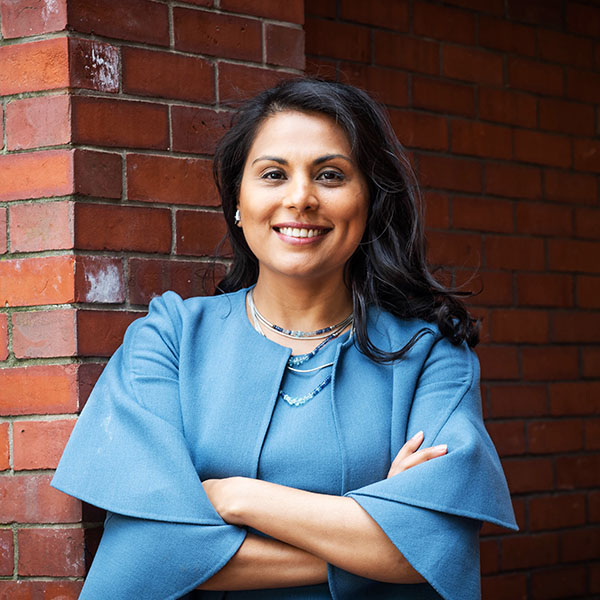BU Launches an Open-Source Infectious Diseases Monitoring Tool Powered by AI and Human Experts

Boston University researchers and collaborators at Boston Children’s Hospital are launching a new artificial intelligence–powered surveillance platform, the Biothreats Emergence, Analysis and Communications Network (BEACON), to monitor and analyze infectious diseases threats around the world. Photo via iStock/imaginima
BU Launches an Open-Source Infectious Diseases Monitoring Tool Powered by AI and Human Experts
The Biothreats Emergence, Analysis and Communications Network (BEACON) is slated to become a global hub for critical information about emerging outbreaks
From measles, to influenza, to mpox, to malaria—infectious diseases outbreaks are happening all over the world, at nearly all times. For health professionals and public health officials, staying up-to-date with pathogens that are particularly dangerous—or have the potential to become a pandemic, like COVID-19 did—is vitally important to help keep us all safe. But accessing real-time information on outbreaks, as they pop up around the globe, isn’t always simple; currently, much of it is aggregated by hand.
To improve the way disease outbreaks are communicated, Boston University researchers and collaborators at Boston Children’s Hospital are launching a new artificial intelligence–powered surveillance platform, the Biothreats Emergence, Analysis and Communications Network (BEACON), to monitor and analyze infectious diseases threats around the world. It’s led by infectious diseases expert and physician Nahid Bhadelia, who has experienced firsthand the importance of global disease surveillance, having treated patients during multiple Ebola outbreaks in West and East Africa and worked on containment and prevention of Zika, COVID-19, and other pathogens.

“Clinicians don’t have real-time information about new outbreaks and what a particular event means for their patients and for their communities,” says Bhadelia, founder and head of the BU Center on Emerging Infectious Diseases (CEID), where BEACON is based. “We live in an age of epidemics—we know this from the frequency of these events happening, and the interconnectivity of the world. This work is needed not just for public health experts, but also for communities and clinicians.”
BEACON is the first open-access infectious diseases surveillance system that delivers information by combining the power of AI and human experts. It pulls in data from a myriad of disease-tracking websites and systems, then uses AI to sift through it all, translate information to seven languages, assign a potential threat level, and produce a written report summarizing the key details; everything is then verified by a person. The team behind the network foresees it becoming a global hub for gathering and disseminating critical information about emerging outbreaks, fulfilling an urgent need.
Speeding Up the Process
In 2022, Bhadelia served as senior policy advisor for global COVID response on the White House COVID-19 Response Team. During her time in the Biden administration, she helped write the first report on the nation’s progress in pandemic preparedness innovation and identified the importance of having infectious diseases outbreak information readily available for everyone, free of charge, on a global scale. Back at BU, where she’s a Chobanian & Avedisian School of Medicine associate professor of medicine, Bhadelia started collaborating with electrical and computer engineer Yannis Paschalidis to figure out how to meet this need. After years of work supported by the National Science Foundation, they developed the idea for BEACON.
The network leverages HealthMap, an outbreak monitoring database at Boston Children’s Hospital that scrapes the web for information and signals about various infectious diseases as they emerge; the hospital’s chief innovation officer, John Brownstein, serves as a BEACON codirector.
“By integrating HealthMap’s decades-long experience in real-time epidemic monitoring with BEACON’s novel AI-driven architecture, we’re creating a uniquely powerful, open-source tool for rapid detection and contextualization of emerging threats,” Brownstein says.
All of those web scraping signals get funneled to BEACON’s large language model (LLM), which is trained to translate, prioritize, and contextualize information related to infectious diseases, and then compile all key information in a report. The LLM is a type of AI that’s also used by programs like ChatGPT and Meta AI to produce written content, answer queries, and summarize text. The AI-generated reports are reviewed by a subject matter expert in the BEACON network, who ultimately decides if it should be published on the BEACON website or if it needs any additional edits or reviews. The whole process happens in a matter of minutes, from signal detection to reporting.
“BEACON is speeding up this process fundamentally,” says Britta Lassmann, a BEACON cofounder and the chief medical officer of the digital medical company Global Second Opinion. “Between the combined networks of global expertise and the LLM, we hope that this will be a hub where people are comfortable submitting information and observations, and we hope that will strengthen BEACON’s reporting capabilities as part of its mission to operate as a global public good.”
Alongside web scraping, BEACON provides an option for users to submit observations directly to the system, which are automatically read by the LLM and used to create a report for expert review. The process is designed to streamline disease intelligence, getting information out quickly and connecting the global disease surveillance community, a priority for international health leaders since COVID-19. The World Health Organization (WHO), for example, has been investing in collaborative disease surveillance.
“BEACON is an exciting new initiative that will strengthen the global ecosystem of public health intelligence,” says Oliver Morgan, director of pandemic and epidemic intelligence systems at the WHO’s Health Emergencies Programme. “This initiative complements existing public health intelligence initiatives by bringing cutting-edge data technologies and providing access to a wide community of users.” Morgan’s team monitors and disseminates news with tools like the WHO’s health emergency dashboard and situation reports. These systems provide some of the many signals that BEACON will monitor on the web.
Collaborating for the Public Good

Paschalidis and his team at the BU Rafik B. Hariri Institute for Computing and Computational Science & Engineering, which he directs, trained the LLM to filter out any non-disease related information and assess the quality of its sources, so it’s intelligent enough to give each report a risk score related to the importance and severity of a potential pathogen.
“We infused the LLM with knowledge about infectious diseases to accurately answer the questions we need the model to answer,” says Paschalidis, a BU College of Engineering Distinguished Professor of Engineering. “This will provide very fast and very accurate reporting of outbreaks.” Building the cloud-based software pipeline for BEACON was done with the help of the Hariri Institute–based Software & Application Innovation Lab (SAIL), a software development incubator for BU research projects.
Paschalidis now codirects BEACON and oversees its technical and computing capabilities. He is confident that the system will not only speed up global disease surveillance, but also alert experts about regional issues, such as the current outbreaks of measles localized in communities in Texas, New York, and a handful of other US states.
“BEACON fills a critical public health need, particularly given the current environment and support for research related to the spread of infectious disease,” says Gloria Waters, BU provost and chief academic officer. “It brings together amazing strength and leadership at Boston University in the areas of infectious disease, artificial intelligence, and large language models. It is a great example of the ability of our faculty to work across disciplines and to have a real impact on society.”
BU’s investment in BEACON began under the leadership of BU President Emeritus Robert A. Brown, who now serves as chair of BEACON’s interim advisory group. Over the years, the project has gained support from the Gates Foundation and federal agencies, including the National Science Foundation and the US Department of Energy, which provided essential computing resources to train the model.
“The Department of Energy and the National Labs have very powerful computing equipment that our partnerships there allowed us to use. This would not have been possible without federal support,” Paschalidis says. “This kind of collaboration benefits every one of us.”
Although BEACON is just getting started, Bhadelia and the team are confident of the platform’s immediate impact on public health. She recently gave testimony to the Massachusetts legislature’s Joint Committee on Public Health, where she urged public officials to remain steadfast in preventing and protecting communities from infectious diseases that are spreading among people and animals, such as the H5N1 bird flu. During her remarks, she said that BEACON will supplement the alerts and educational materials from federal, state, and public health partners, just like early-warning systems for fires and hurricanes.
“BEACON’s job is to analyze and broadcast the rise of new threats,” she said to the panel of legislators. “I offer myself, my faculty, and the BU CEID as a resource to you, as well as a partner for [addressing] these complicated infectious disease problems.”

Comments & Discussion
Boston University moderates comments to facilitate an informed, substantive, civil conversation. Abusive, profane, self-promotional, misleading, incoherent or off-topic comments will be rejected. Moderators are staffed during regular business hours (EST) and can only accept comments written in English. Statistics or facts must include a citation or a link to the citation.